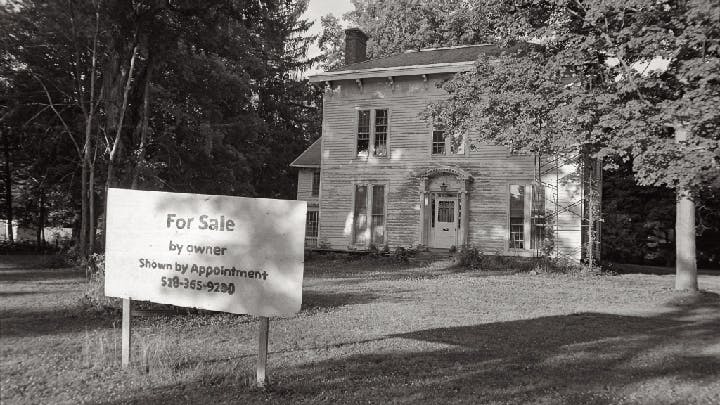Summer 2016
Outsourced Jobs and Poisoned Water: An American Town Fights for Survival
– Caitlin Randall
After years of economic decline, Hoosick Falls seemed ripe for a revival. Then they started testing the water.
In late February 2014, when snow still blanketed the northern counties of New York State, a group of townspeople in a river-bend village near the Vermont border sat down to engineer a resurrection.
Like hundreds of small towns across America, Hoosick Falls, some 30 miles northeast of New York State’s capital Albany, has seen its once-booming manufacturing base head south or overseas and with it local jobs. The result has been a steady stream of young people migrating elsewhere and a worrying drop in tax revenue for this village of 3,500. Hoosick, the surrounding township, claims an equal number of residents.
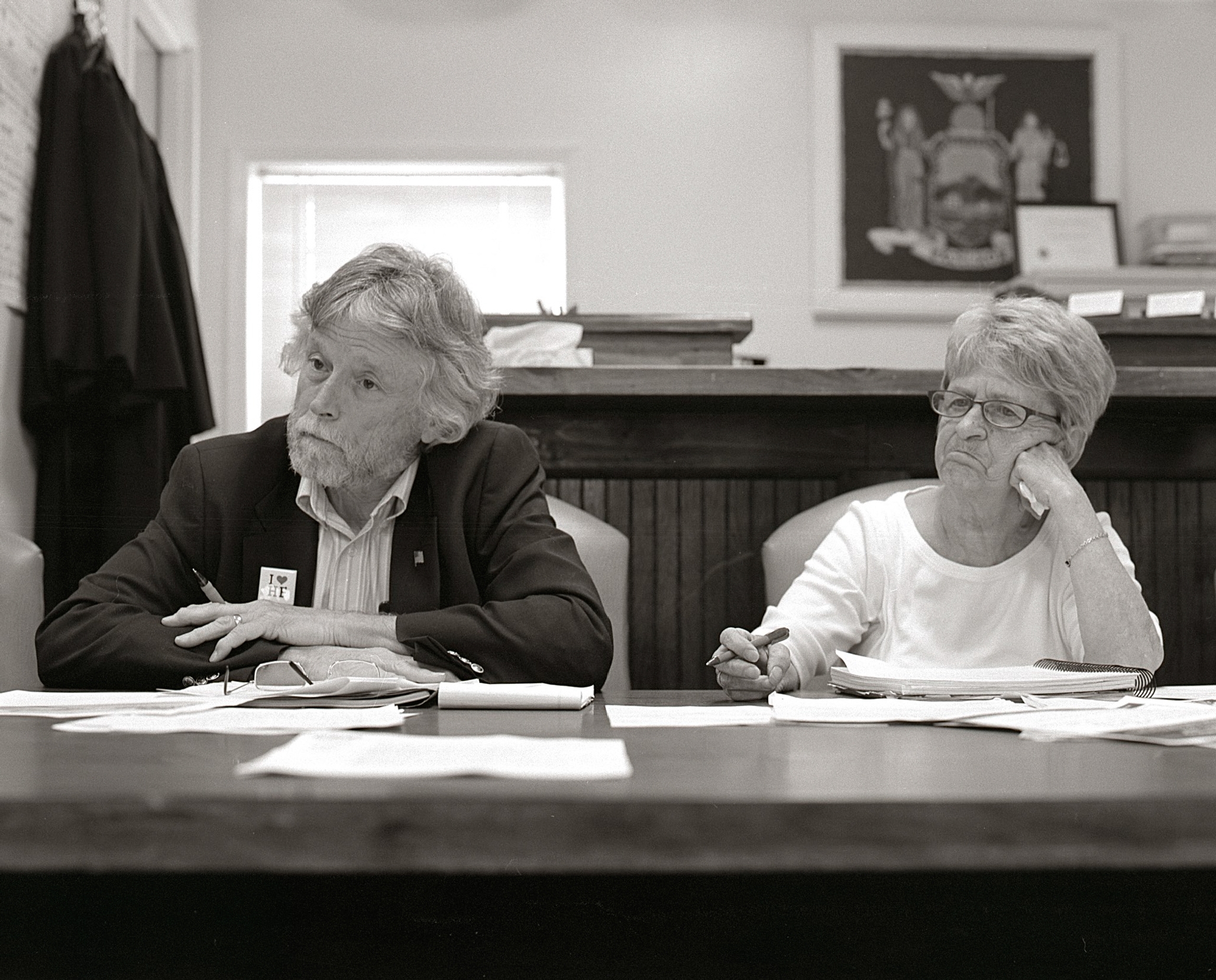
The group - grassroots collaborators and town officials, 42 in all - met in the bowels of the old Armory, a 19th century redbrick fortress that looms near the center of town. Their aim was to concoct a survival strategy; a hail-Mary pass to save Hoosick Falls from sliding into economic oblivion.
“No idea was too crazy,” says David Borge, the Village Mayor who helped mastermind the project, a joint initiative between the village and township. “There was a real energy in the room and a lot of creative thinking.”
From planting marijuana in verdant fields around the village, to building a network of snowmobile trails, to marketing low-cost space to start-up entrepreneurs, ideas buzzed around the room. Calling themselves Hoosick Rising, they got to work, hiring a consulting company with $25,000 that was left in the village coffers from a state redevelopment grant, and drafting a plan for economic renewal. The group was determined to forge a new identity to revitalize their town.
“There was a feeling that things were happening. An excitement about the possibilities,” says Borge, pushing back a sweep of his woolly salt-and-pepper hair.
But that was before toxic chemicals were discovered in the municipal water system. Now even the town name − pronounced who-sick − has the ring of a heartless joke.
It began when Michael Hickey’s father died of kidney cancer in 2013, not long after retiring as a longtime factory worker in the local plastics plant. Convinced the village was reporting an unusually high rate of cancer, Hickey started asking questions.
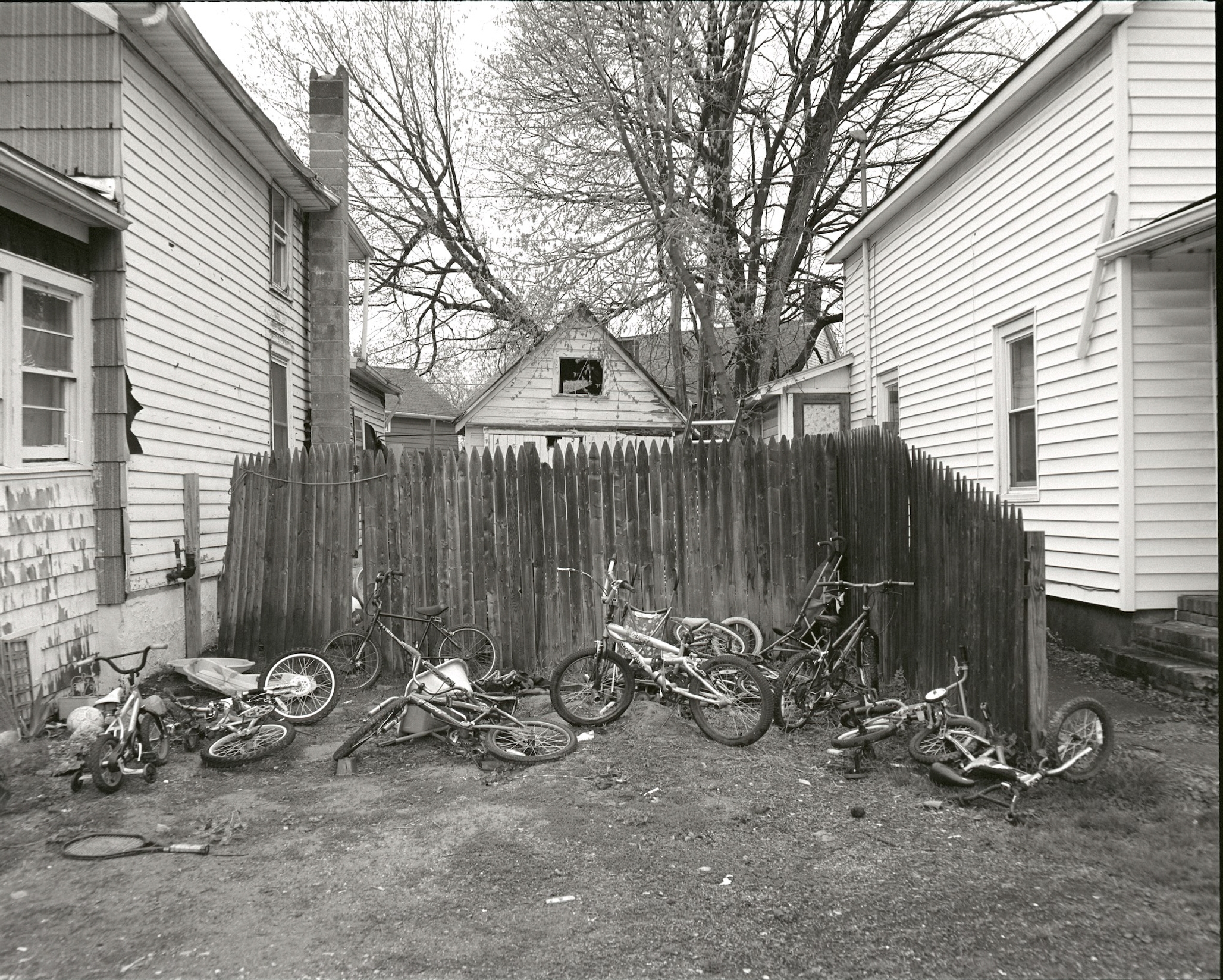
“When you live in a small town where everyone knows their neighbors, it’s easy to spot that a lot of relatively young people are dying of cancer,” Hickey says. He confirmed his hunch with the town GP, whose medical practice serves a roster of 5,000 patients.
Hickey quickly turned his focus to the hardscrabble neighborhood around the plastics plant, where neighbors often talked of strange-smelling tap water and acrid fumes from the factory smokestacks. He knew the plastics facility sat some 300 yards from an underground well that feeds the village's water treatment plant.
Blocked from running tests near the plant, Hickey collected water from his own kitchen sink and even snuck testing kits into a local McDonald's and a Dollar Store bathroom not far from the village, sending the samples to a lab in Canada for analysis.
Today the 37-year-old insurance underwriter is a local folk-hero to many in Hoosick for his dogged determination to declare the water here unsafe. For Hickey, it was a battle he had to wage.
“I love the town and the community. I didn’t want to hurt it, but this was just too important to ignore. I did it for my son who was born as my father was dying,” Hickey says of his decision to bring his research to local, county and finally state authorities.
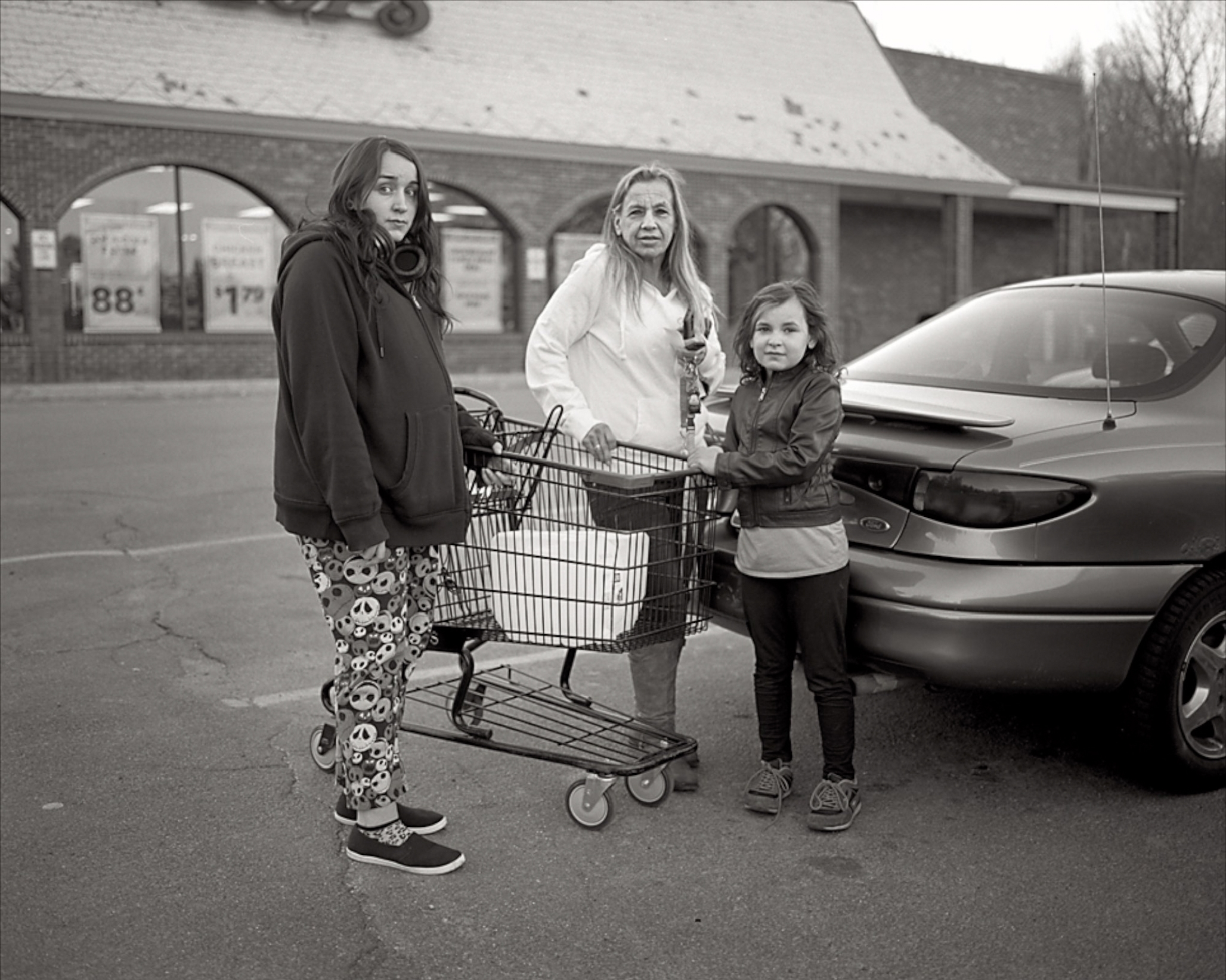
What Hickey had discovered was that high levels of perfluorooctanoic acid, or PFOA, a chemical linked in some studies to kidney and testicular cancer as well as thyroid disease, were tainting the village water system as well as numerous private wells in the surrounding township.
But despite his and others’ prodding, nearly a year and a half went by from the time New York was first warned of possible contamination, in August 2014, until State health officials alerted villagers to stop drinking the water. Recently, faced with the worst environmental crisis of his five-year administration, New York Governor Andrew Cuomo has promised $10 million to install a new filtration system and has unlocked state Superfund money. Early this year, a temporary filtration system serving more than 4,000 customers was installed in the village. By March, the state Health Department had declared the village water safe to drink.
But the water crisis has left townspeople fearful. Many are still reluctant to drink the tap water, relying instead on free bottled water stacked high at the local supermarket. When the results of residents’ blood tests were sent out by the Health Department in June, another wave of panic rolled over the town.
Among the 2,000 tested, results showed hundreds of townspeople had levels of PFOA in their bloodstream 11 times higher than the national average. The Environmental Protection Agency insists these levels merely reflect a person’s exposure to the chemical and aren’t necessarily predictive of long-term health problems. But for residents here, it’s the lack of certainty that’s most unnerving.
Indeed, for many residents, Hoosick, already struggling with decades of economic decline, has been irretrievably damaged.

“We’re trying to move forward and keep going, but it feels as if there’s a stigma attached to living here,” says Michelle Baker, a Hoosick resident. “My 14-year-old daughter grew up on PFOAs. They were in her baby bottle. How do you come back from that?”
Dodge Industries, an Eisenhower-era company that produced Teflon products ranging from fabric to foil to yarn in its plant near the Hoosick River, used PFOAs as a processing agent. Dodge bought the plant in 1954 and it has been sold a half-dozen times since then, ending up in the hands of Saint-Gobain Performance Plastics in the 1990s. Saint-Gobain has agreed to help fix the PFOA problem, even though much of the pollution may have been taking place for decades before they came to town.
“Back in the 1950s and ‘60s, they called Hoosick Falls the Teflon capital of the world,” says Phil Leonard, the town historian and treasurer of the local Louis Miller Museum. Shaking his head, Leonard looks up at wall of faded maps and old factory photos. “Who would have imagined it would lead to all this?” he asks.
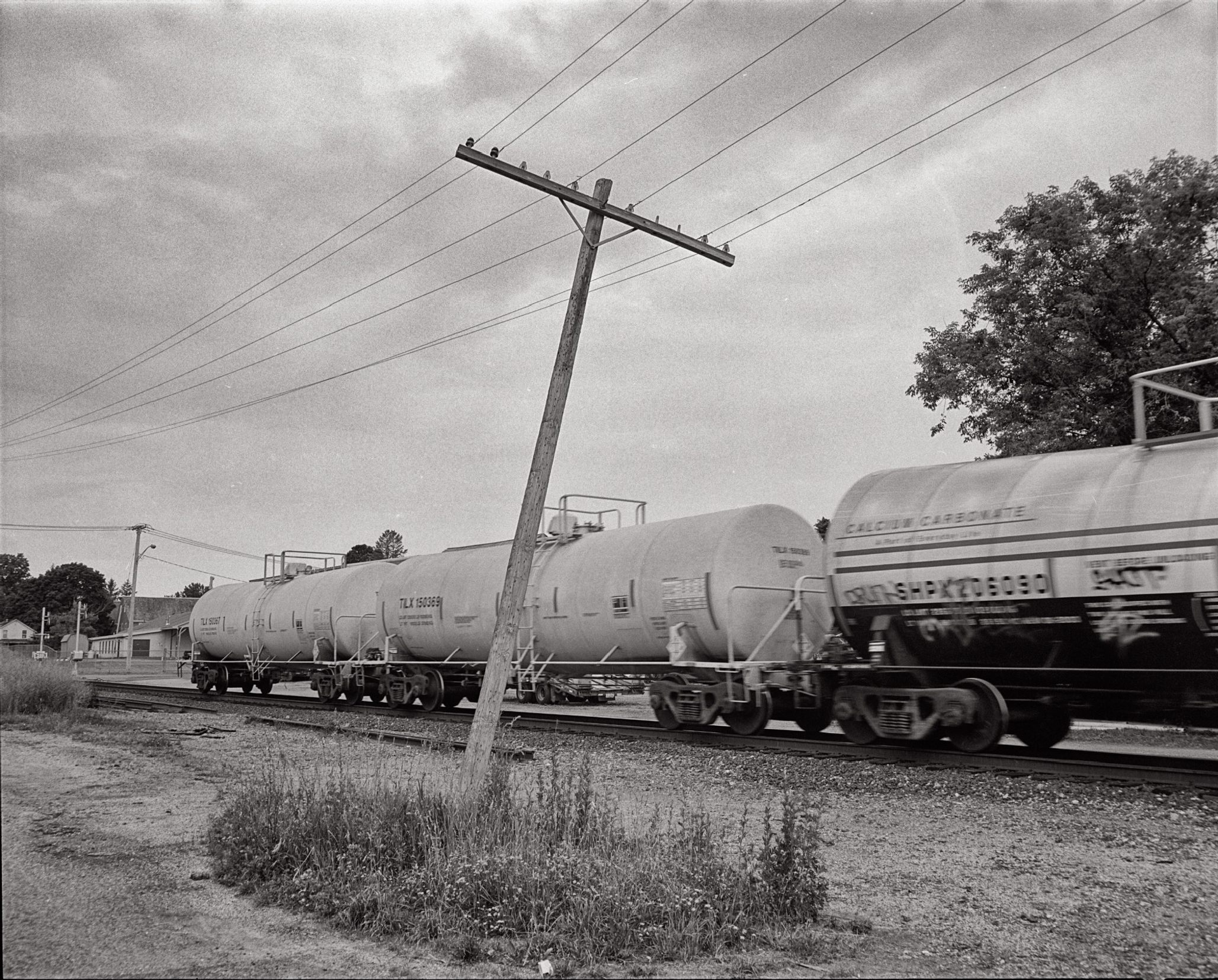
At 90 years old, Leonard remembers the boom times, and as a historian he can trace the town’s economic ups and downs right back to its beginning in 1794. In its heyday in the late 1800s, Hoosick Falls was an industrial powerhouse. The town’s major employer, Walter A. Wood Mowing and Reaping Co., was the largest manufacturer of farming equipment in the world by the 1890s.
“Wood was smart enough to start mass production lines. Rumor is that Ford himself came here to see how it was done,” he muses, making his way up a narrow staircase to the second story of the small museum, a converted townhouse brimming with memorabilia.
Wood’s success - at its peak his factory employed 2,000 people and took up over 85 acres of land - drew other businesses and factories to Hoosick Falls and the village population swelled to 7,000, with a significant portion of immigrants among the newcomers: Irish, Italians and Lithuanians. But the town’s golden age ended with World War I as Wood’s sales in Germany and Eastern Europe dried up. After the war, unable to hold off competitors like John Deere, the vast factory closed in the 1920s, its sprawling grounds sitting mostly vacant for decades. After several fires claimed parts of the vast, vacant facility, it was finally leveled in the 1970s.
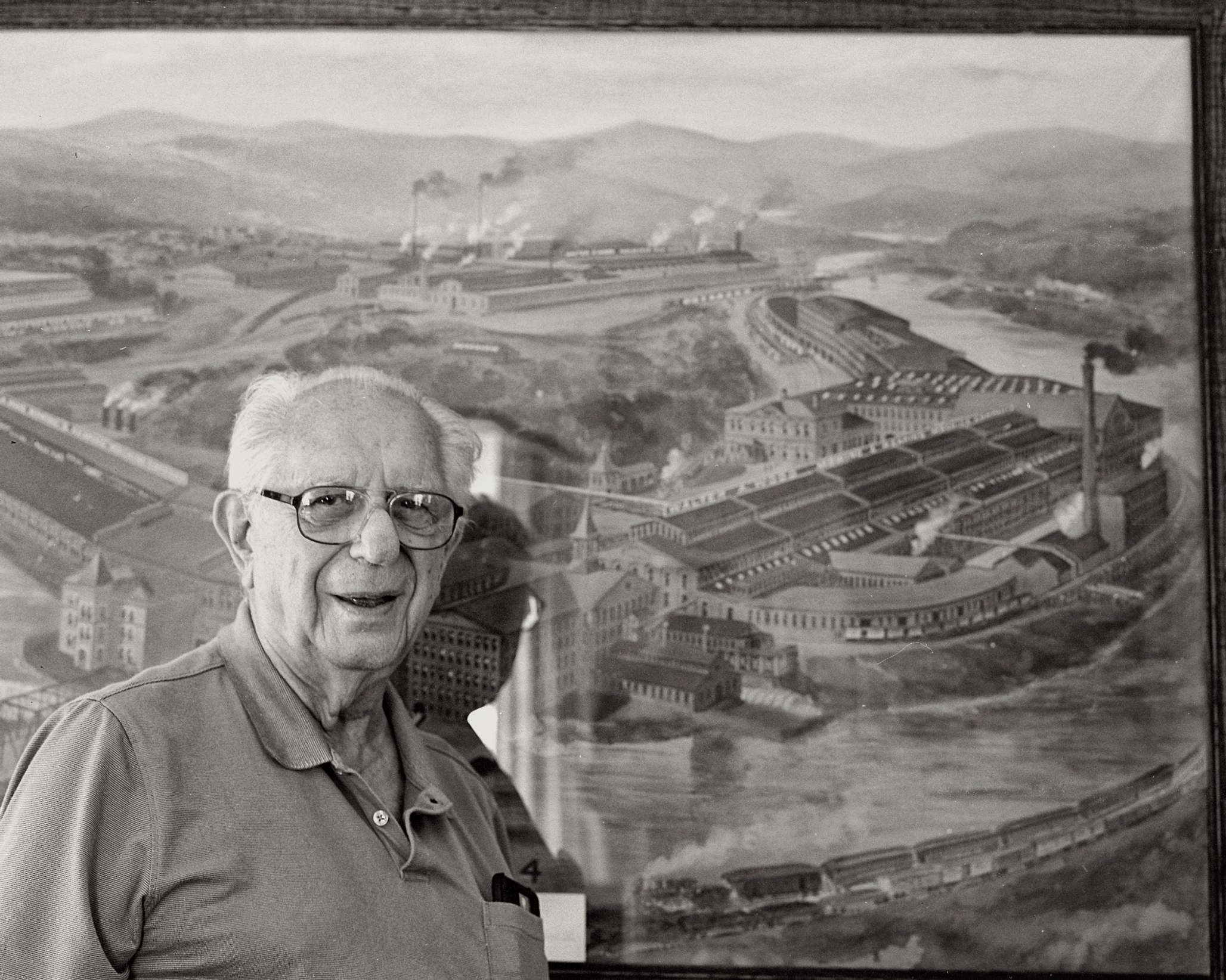
A second, less sweeping renaissance boosted the town’s fortunes after World War II when 11 factories, employing a total of just over 1,000 workers, set up shop in in Hoosick, despite its relatively remote location in the northeastern outback of Rensselaer County.
“People would ask how a little town in the middle of nowhere could attract all those factories,” Leonard says as he rifles through old clippings with titles like “Hometown Heroes” and “Hoosick Factories, 1966.”
“There was an industrial spirit here that was undeniable. But that dried up decades ago. It’s no wonder people are desperate for a political solution. Some are even turning to Trump.”
Today, two factories remain in Hoosick Falls: Lovejoy Chaplet, a precision machinery maker with under 50 employees, and Saint-Gobain with under 200 employees.
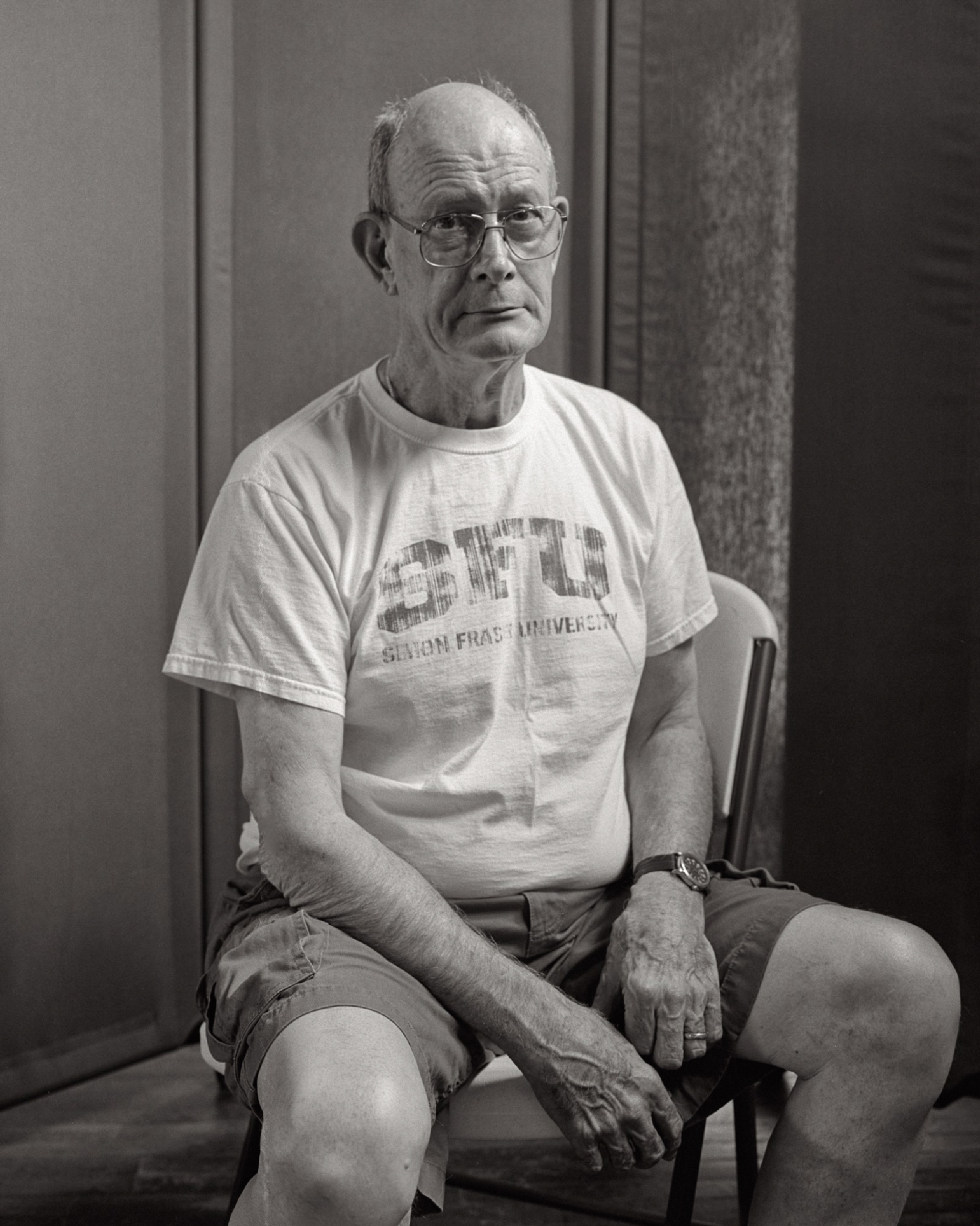
“When I came back to town in 1978, the jobs had begun to dry up. In a couple of decades, we went from being a manufacturing behemoth to nothing,” says Dennis Casey, a Hoosick Falls resident and member of the village zoning board.
For town historian Leonard, it was the Elks’ Club leaving town that foretold the future.
“When an Elks leaves town, you’ve lost your middle class,” he says. “Now the building’s a parking lot.”
As industry departed, looking for easier transport connections and cheap labor, so did jobs and people. The population has fallen by about 1,000 residents since 1960, according to US census figures. A study by Camoin Associates, the consulting group brought in by Hoosick Rising, projects further population declines in both the village and the surrounding township by 2019. Most alarming is that the population groups losing numbers fastest are 35 to 44 and 45 to 54, leaving the town with an aging population and fewer residents in their prime working years. The Camoin figures also show that retail jobs in Hoosick Falls are down 27% since 2004.
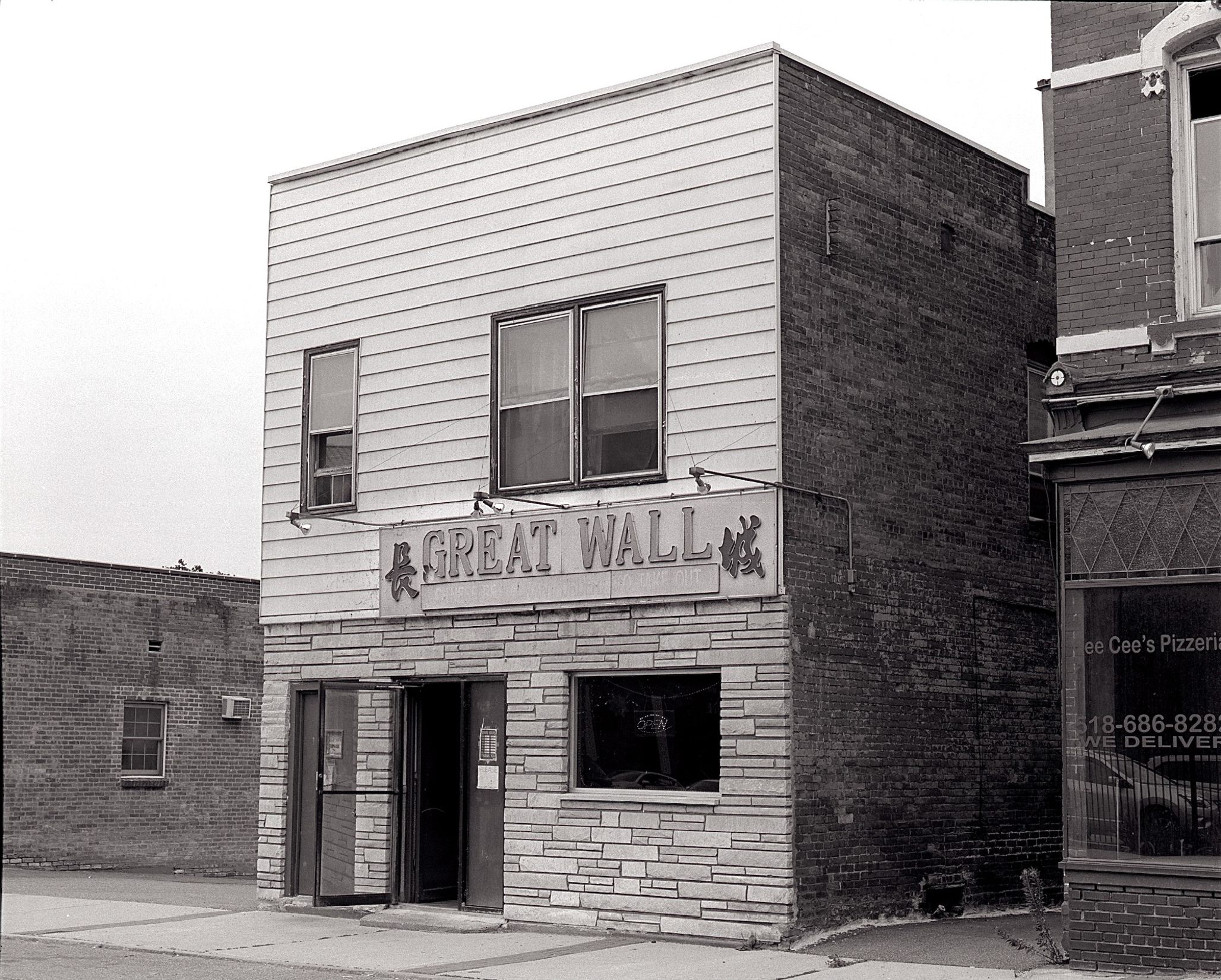
A walk around Hoosick Falls confirms the findings. Boarded-up shops and shuttered restaurants claim much of the downtown. Hand-painted ‘For Sale’ signs dot the main drive into town, rooted on the lawns of once elegant Victorian houses. But despite the derelict properties, there is a charm here that even economic hard times can’t destroy. The sturdy, red-brick buildings with rounded arches and eccentric rooftop designs, the steel-girder bridges, and fading Victorian mansions all inspire fantasies of refurbishment on a massive scale.
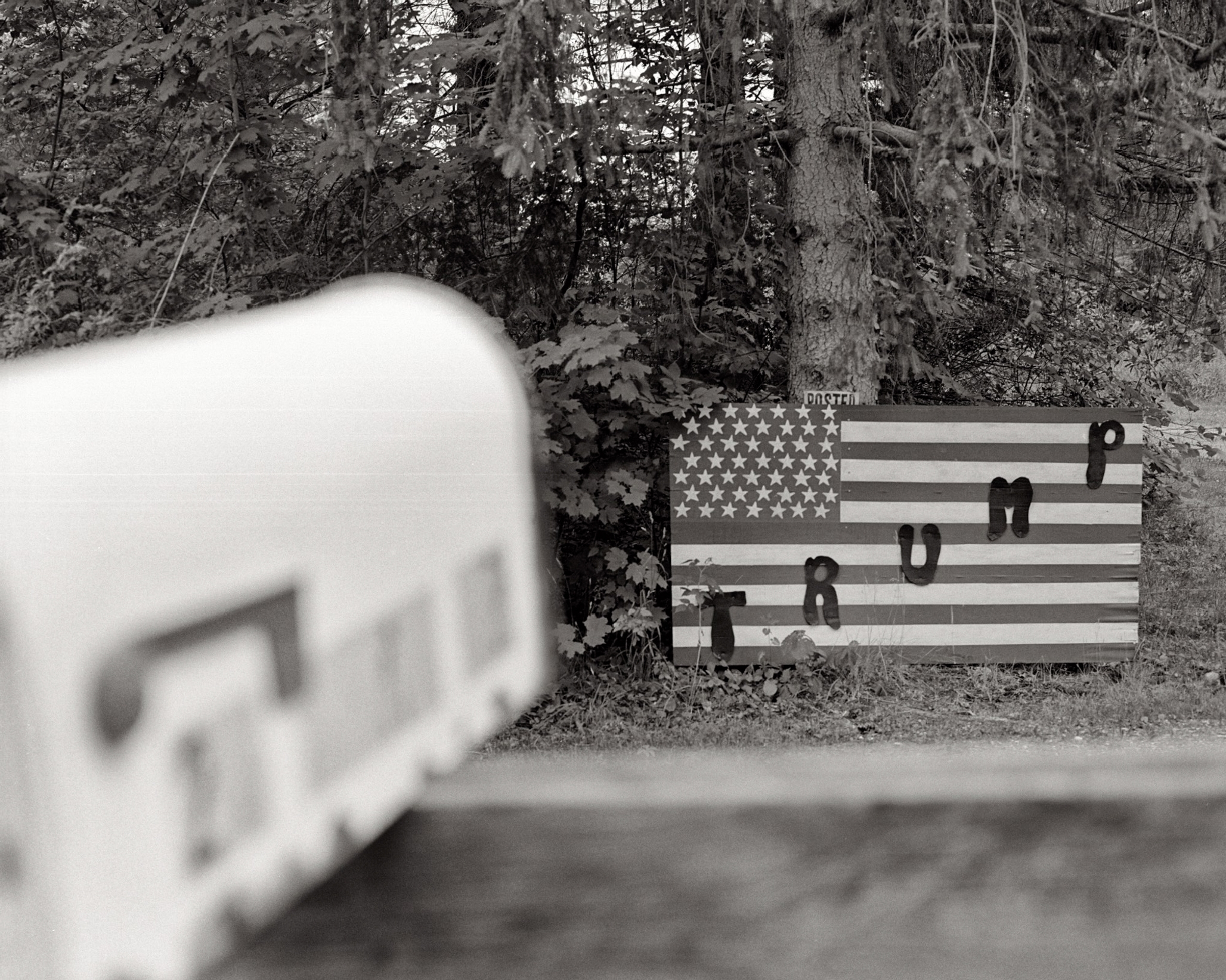
When Garry Brown first came to Hoosick in 1994, he took on what may be the village’s biggest fixer-upper. He was in his early 30s, living with his wife in a cramped apartment in Schenectady. He was also one year into owning a brewery-pub in economically beleaguered Troy on the outskirts of the state capital, about 25 miles from Hoosick.
“We fell in love with the area and the town of Hoosick. It seemed liked a small community, but a complete community,” says Brown who, in jeans, baseball cap and work boots, looks more a construction worker than a brewer. “We were able to buy a 110-acre farm in West Hoosick that fit our price range, which was pretty meager. That was the first commitment.”
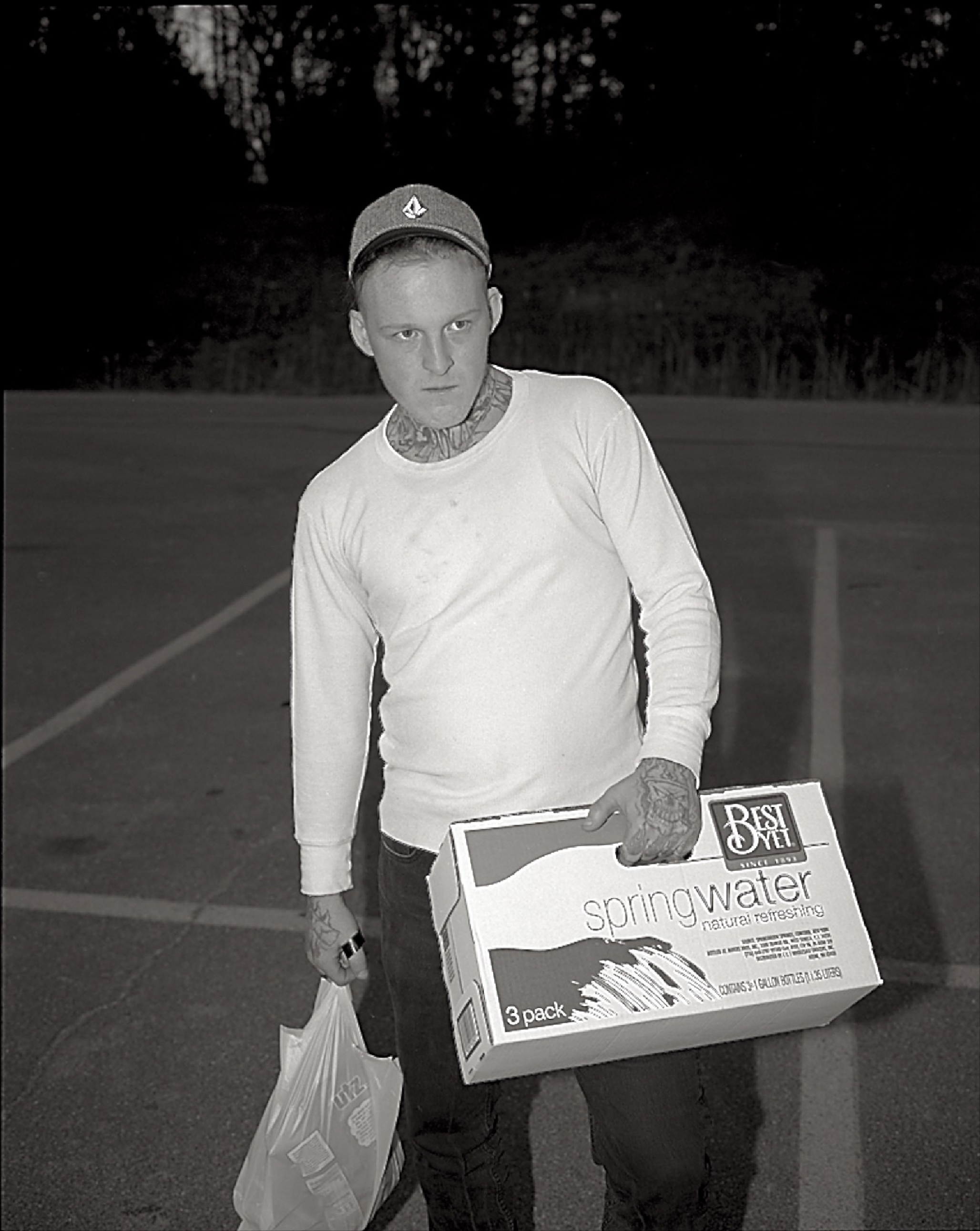
Three years later, Brown took a bigger leap, investing upwards of $3 million in an old paper mill outside the village. Built in 1854 on the banks of the Walloomsac River, with a waterfall churning nearby, Brown bought the property from a pneumatic valve manufacturer eager to move out.
“There were 40 people assembling valves here,” he says. “The company president showed me around and ended up by bringing me out on the bridge with the waterfall behind, the cream of the tour. That’s what sold me on the property. It reminded me of the old breweries I had toured in England and in Germany back when were first researching the whole brewpub idea.”
Brown is quick to admit he took a risk in Hoosick, but coming off a high-stakes venture in Troy – where he had bought a 150-year-old warehouse for $63,000, pouring time and money into renovation, creating the brewpub that garnered $6 million in sales last years – he was determined to roll the dice again.
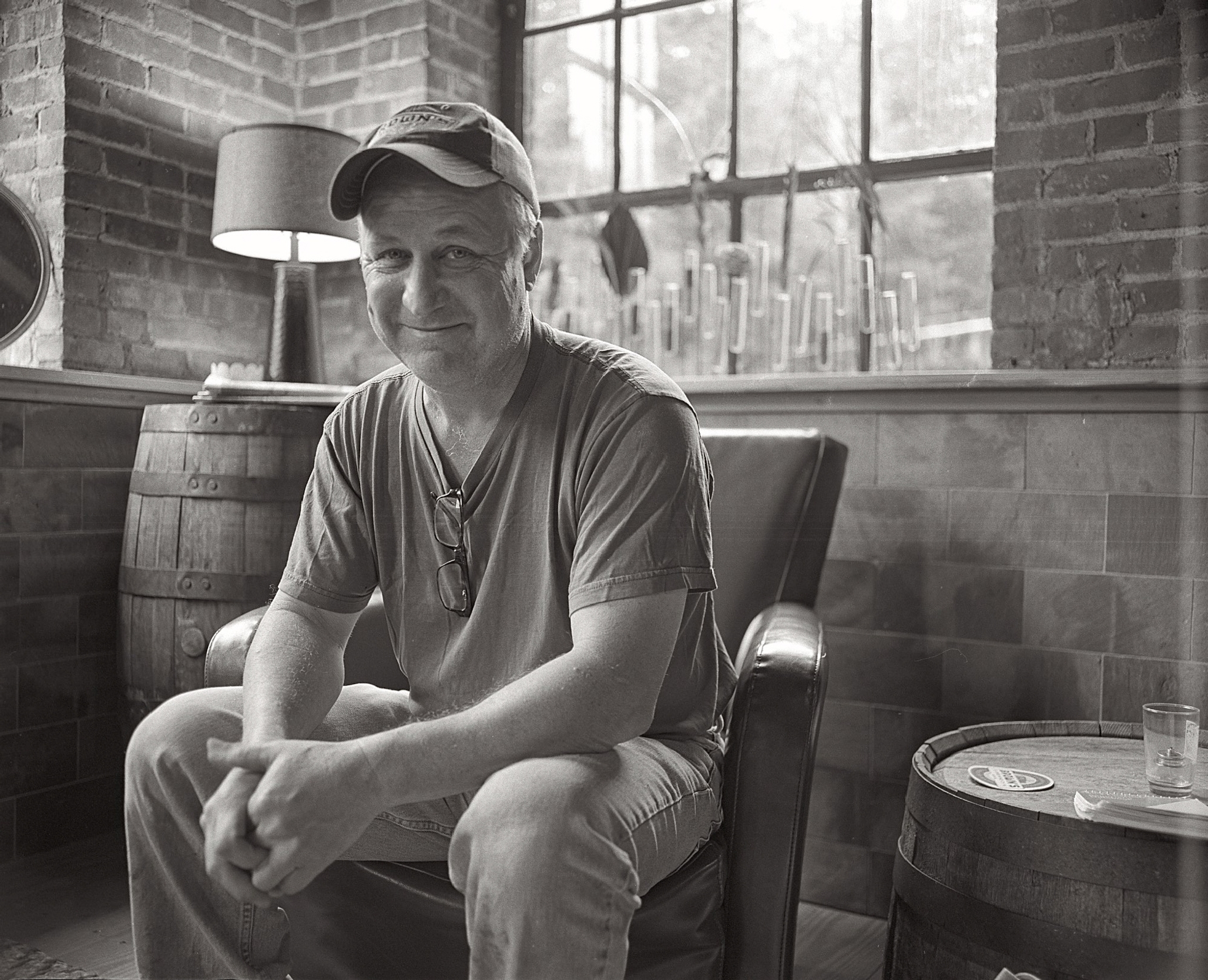
“Hoosick is like a miniature Troy. Factories and jobs left Troy, property got cheap and a lot of people stepped in who were young and strong and wanted to do something, Brown says of the small city on the Hudson. “Now there’s a bit of renaissance going on there.”
Leaning back in an overstuffed armchair that sits in the corner of his repurposed mill, a view of the waterfall cascading behind him, Brown adds, “I’m realistic enough to know that Hoosick Falls won’t recover in the same way as Troy, but I like to think it’s possible for the town to stage a comeback.”
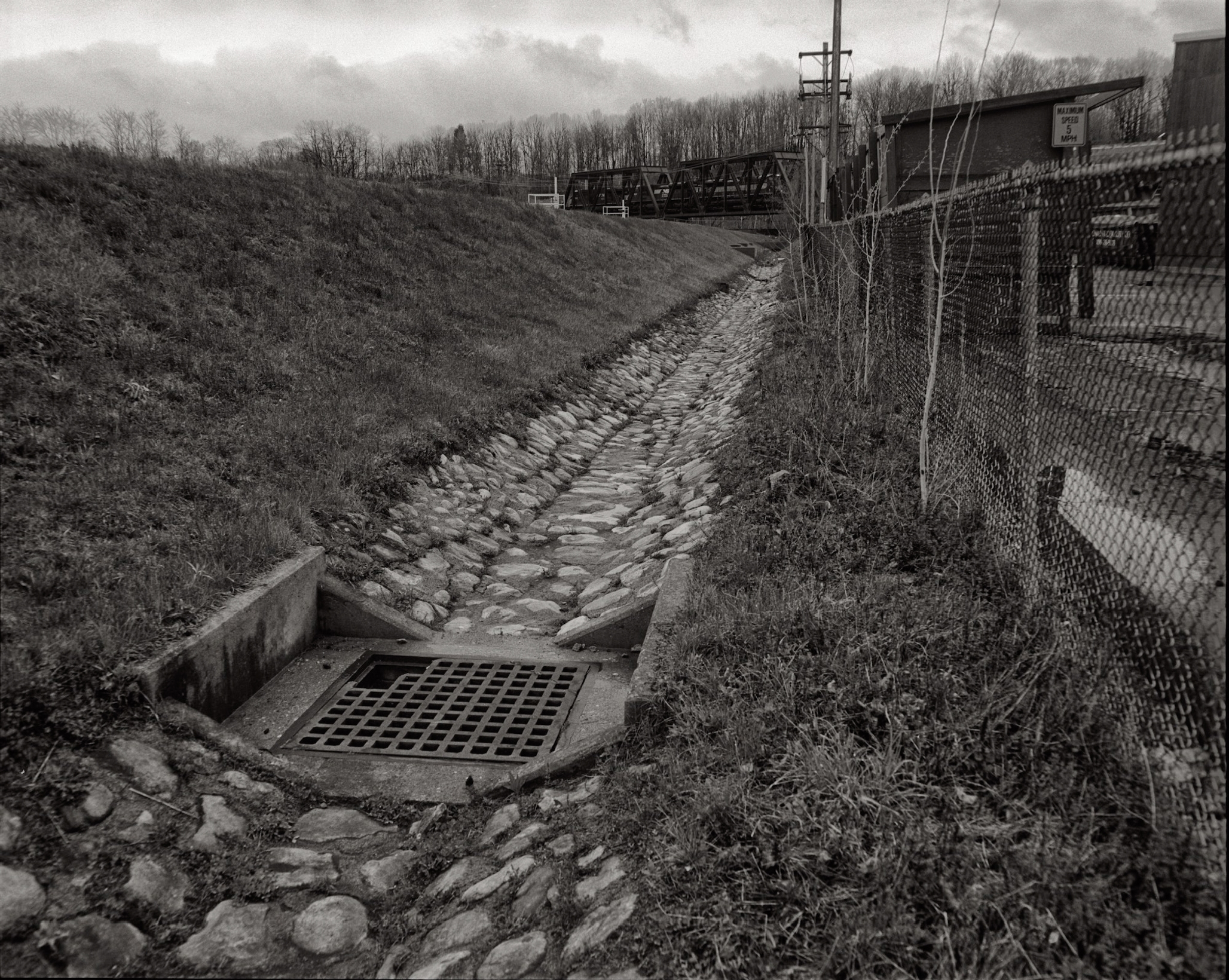
He sees part of the solution in linking local agriculture to local industry. His own five-year plan includes building a malting facility and hop processing plant, ideally using crops harvested from local farmers. Brown hopes to see production at the Hoosick brewery, where current output is about 6,000 barrels a year or about 186,000 gallons, jump three-fold to 20,000 barrels for broader distribution in the Northeast.
“New York is not just trying to bring craft brewing back to the state, but also raw material production like barley and hops,” Brown says. “It’s not far-fetched when you consider New York was the center of hop-growing before Prohibition.”
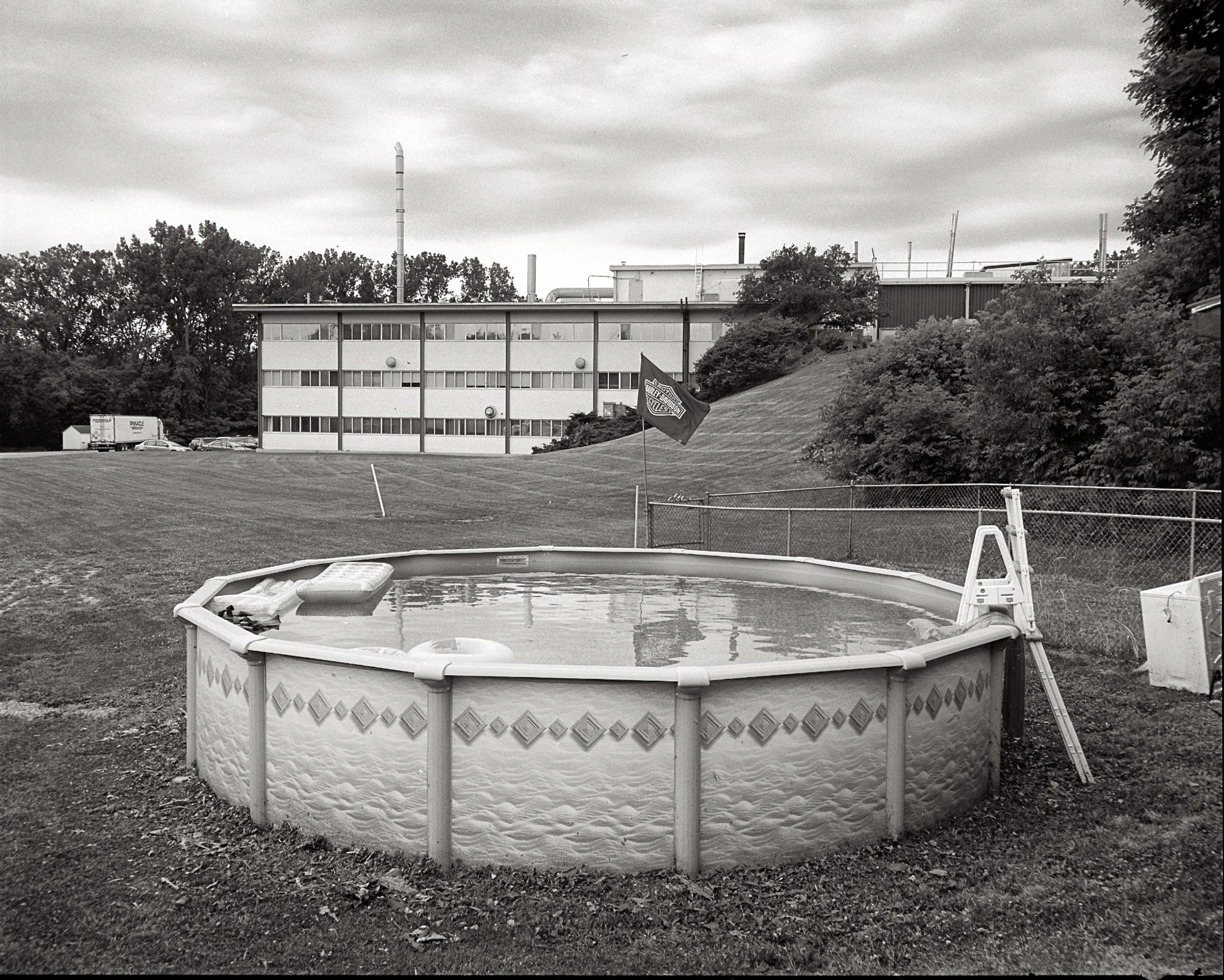
As for the water, at the very heart of craft beer brewing, the well at Brown’s Walloomsac Brewery has tested “no-detect” in several separate samplings. “It’s been very scary, but what are we going to do? Up and run?” he says. “We have roots here and I’m not leaving.”
There are other green shoots in town as well. This month Trojan Steel, a structural steel supplier to the construction industry, is moving to Hoosick Falls, taking over an 80,000-square foot manufacturing site left vacant for years. A tractor dealership has just opened on the edge of the village.

“These are relatively small businesses, but they mean something to the community,” Mayor Borge says. “It’s a beginning.”
Some people don’t put stock in the idea of luring manufacturing back to town. They see solutions in local agriculture than can tap into the green economy or alternative energy - 1,900 solar panels, almost 500 kilowatts, were recently installed on a town landfill site - or a combination of art and tourism to bring in much needed visitors. The town’s Armory, sold for $1 to a not-for-profit group HayC3, is used for a variety of artistic programs.

“It rubs me the wrong way to say manufacturing jobs in the U.S. are gone, but they sure aren’t coming here anymore,” says Craig Pine, an engineer who works in Troy, a 45-minute commute from town.
“The truth is, what industries of any sort would line up to move here, a Superfund site?” he adds, walking an old railway bed that winds its way along the Hoosick River. Not far along the trail, he points to the metal frame of the Saint-Gobain plastics plant and two of the three village water wells nearby. A Little League baseball game is in full swing within earshot.
“It still feels like a small town here, despite everything that’s happened,” Pine says looking out over the river. “There’s a sense of community inherent to this village…it’s one of the few things we have left to brag about.”
* * *
Caitlin Randall is a London-based freelance writer. She has worked as a staff reporter for Reuters and Dow Jones Newswires. Her work has been published in The Wall Street Journal, Newsday, Narratively, and Art & Antiques Magazine, among others.
Peter Crabtree is a freelance photographer and writer based in Vermont by way of the Bronx.

